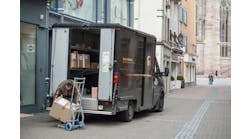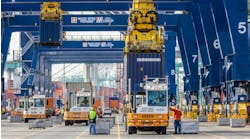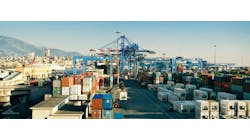When there are problems, solutions arise. The current truck driver shortage is a major problem when you consider that 71% of all freight in the U.S. is moved via trucks.
How to find substitutes for drivers? How about autonomous drones?
Last year drones generated $24 million and are expected to grow to $1.6 billion by 2027, according to the Insight Partners, as reported by Dain Evans, of CNBC.
A variety of companies, mostly start-ups, are producing these drones and using them in a limited way to deliver goods.
For example, in Mach of 2019 Matternet, the creator of the M2Drone, partnered with UPS to create a logistic service to deliver medical samples via drones. They used the WakeMed healthcare systems in North Carolina. It’s the first FAA-approved use of a drone system for routine revenue flights in the U.S., according to Matternet. The company’s goal is to “make access to goods as frictionless and universal as access to information.
Another company in the medical delivery services is Zipline, a start-up company that is valued at $1.2 billion. Currently, the company delivers medical supplies, including blood, rabies vaccines and antivenom, to thousands of hard-to-reach health clinics in Rwanda and Ghana.
In addition to medical applications, a number of companies are working on cargo drones for other sectors including oil and gas and shipping and construction.
For these applications, a number of companies have products in development. Sabrewing is working on a prototype that can achieve speeds of up to 180 knots (207 miles per hour) with a cruising altitude as high as 22,000 feet.
And startup, Natilus, located in San Franciso is working on a 30-foot prototype that’s about the size and weight of a military Predator drone.
As more of these products are developed and placed into use, the hope is that not only will solve the problems the trucking industry is facing but it will also open up new markets. Stay tuned.



